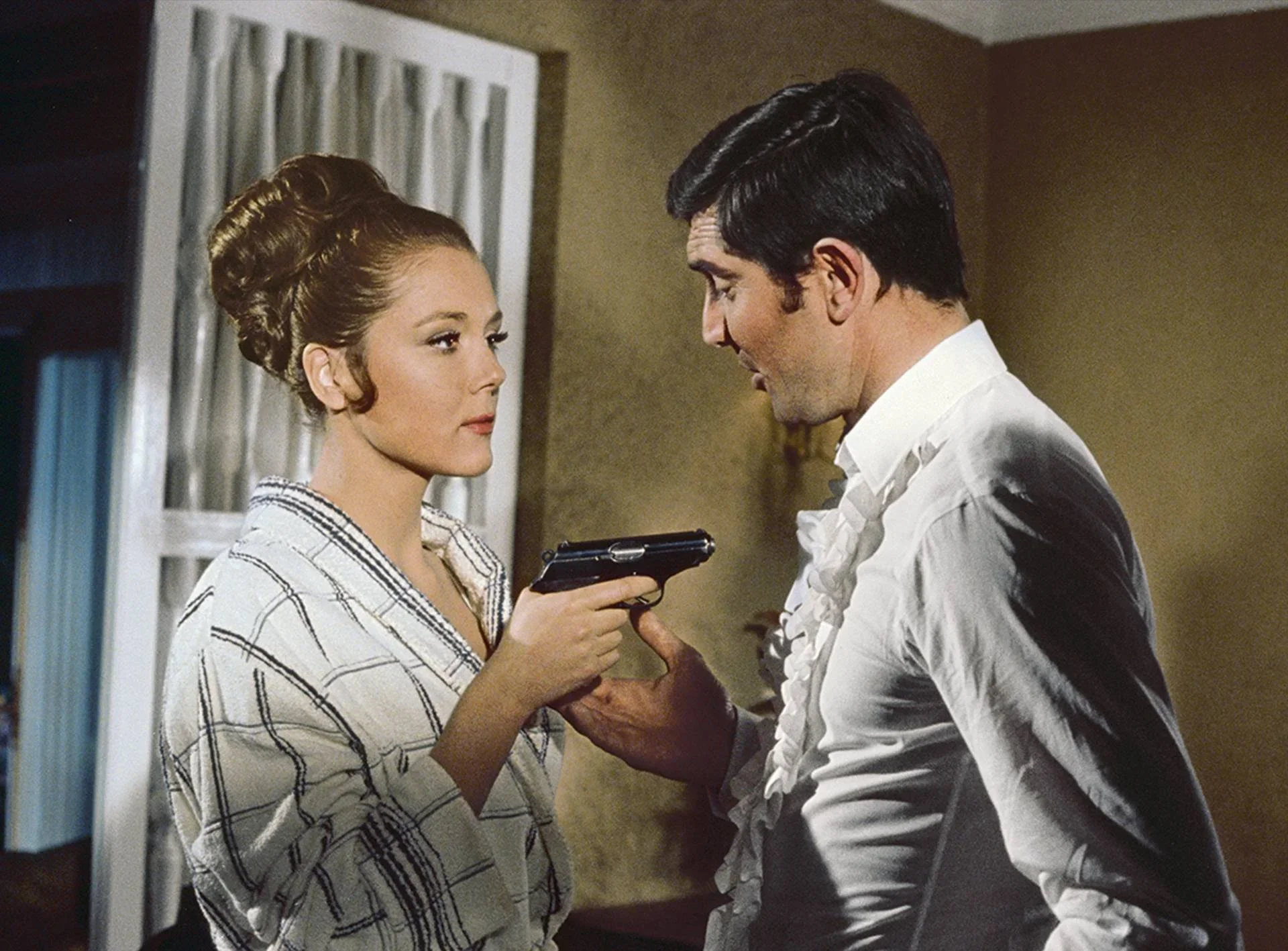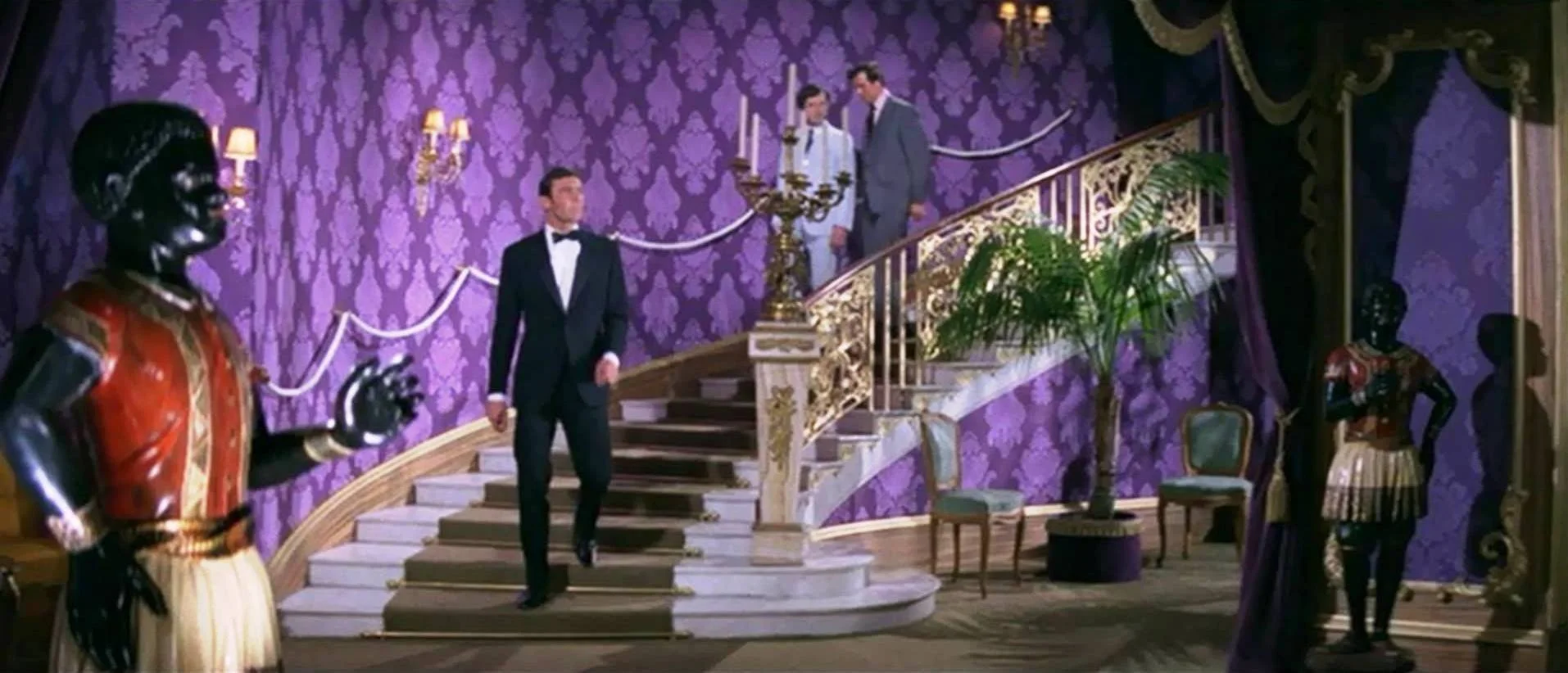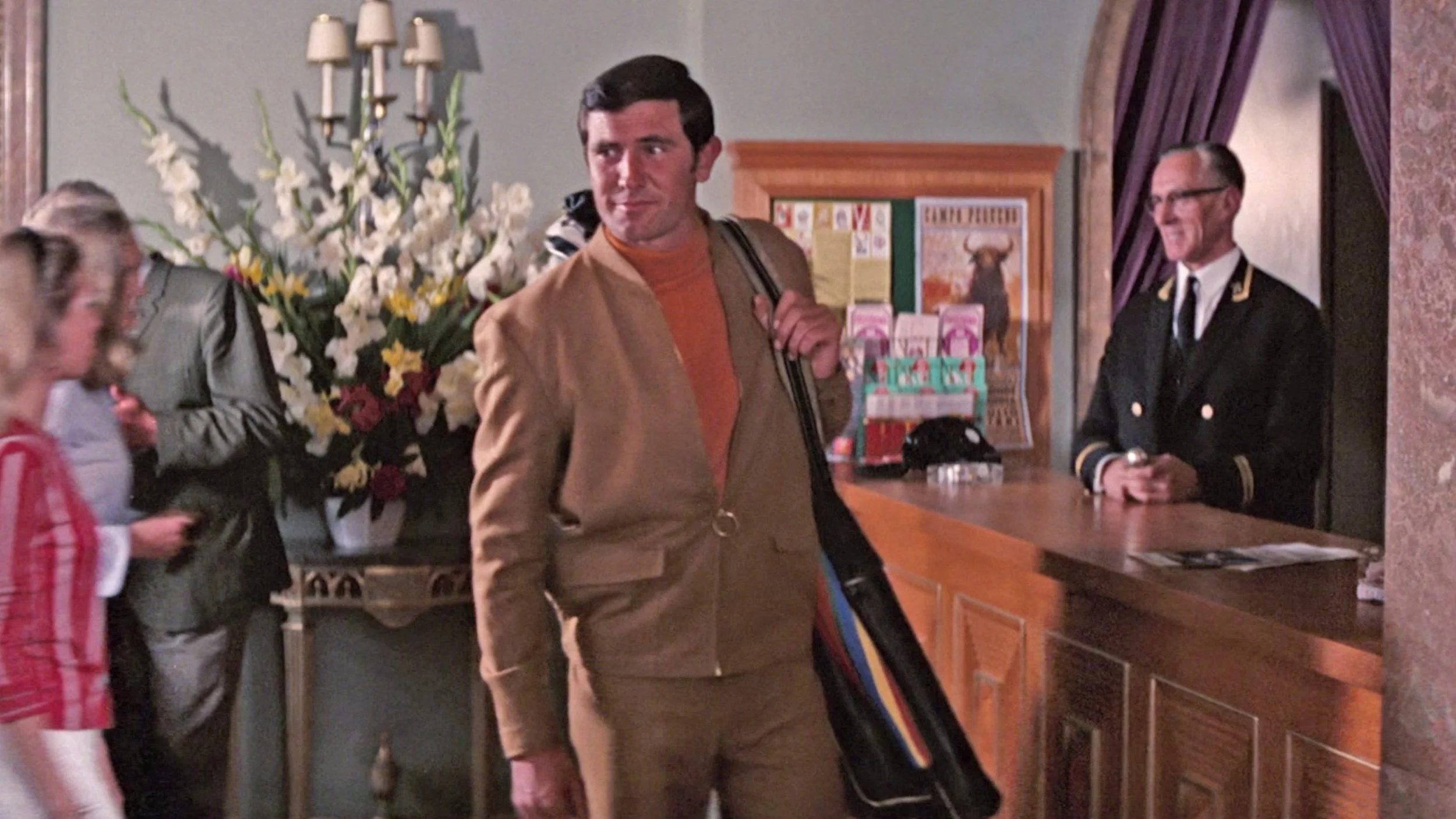Beginner’s Bond: On Her Majesty’s Secret Service
These “Beginner’s Bond” posts are an account of my quest to close the largest gap in my personal cinematic knowledge: the James Bond franchise of films. I am watching all of 007’s adventures for the very first time and recording my reactions here. This time I’m in for something a little different with the 1969 movie On Her Majesty’s Secret Service.
The film opens with our hero rushing into the ocean to save a woman attempting suicide by beach. The distressed lady is Contessa Teresa “Tracy” Vincenzo, who just happens to be played by Diana Rigg, one of the most beautiful women of ‘60s cinema. So she’s obviously the love interest from scene one. Bond gets kidnapped, the first of many times this will happen in the movie, and brought before Marc-Ange Draco, the kingpin of a massive European crime syndicate. He offers James a million dollars to marry his daughter, Tracy. Mr. Bond counteroffers that he will continue to see Tracy if Draco will help him track down Ernst Blofeld, the leader of the terrorist organization known as SPECTRE—which also happens to be the biggest competitor to Draco’s crime syndicate.
Blofeld’s villain lair is disguised as a research facility atop the snowy mountain of Piz Gloria. In order to infiltrate, Mr. Bond goes undercover as Sir Hilary Bray, a genealogist with the London College of Arms. This is because despite all of his wealth and power, Blofeld still covets the title of Count, as if that would finally make him a respectable gentleman. The wannabe count who claims to hold the world in his iron fist is still desperate for recognition from the kind of people who do not care about anyone outside their social strata. Even holding the power of life and death over every living thing on Earth, Blofeld is nothing so much as he is pathetically lonely, willing to kill millions people just to get the attention of elitists who will never see him as an equal no matter how many titles he manages to accumulate. It’s honestly the first time I found a Bond villain more pitiful than hateful, and that’s really no fun.
The longest Bond movie ever, clocking in at just under two-and-a-half hours, concludes with a big set piece shootout at a snowy mountain base—proof positive that OHMSS is definitely Christopher Nolan’s favorite Bond movie. That setting has been practically cut & pasted into Inception. There’s a thrilling chase on skis, and at one point Bond looks super cool firing a machine gun while sliding on ice, but all the energy and excitement built up from the big bombastic action sequence completely deflates as Bond and Blofeld look like toddlers wrestling in a runaway bobsled against the most obvious blue screens.
Director Peter Hunt removed a lot of the more fun elements established by earlier entries in the franchise—there are no sci-fi gadgets, no Aston Martin with machine gun headlights, and no superhuman henchman to defeat. And yet despite going to great pains to remove all of these “silly things” from his vision of James Bond, the movie continuously calls back to its predecessors, reminding the audience over and over again that these films used to be a lot better. There’s actually a scene where Mr. Bond takes some of his classic gadgets out of his desk drawer and stares at them with sentimentality as the themes from previous (much better) movies play. This and a few other mistakes were made with the intention of creating a continuity of character, so that viewers would know that this new actor was still playing the same James Bond they have come to know and love over the last five films. Except it did the exact opposite, showing us all the cool stuff 007 movies used to do before Peter Hunt decided to throw them out in pursuit of his vision of a slower, more boring Bond movie with enough blank space to take a nap and not miss any of the action. The misguided Mr. Hunt often made a big deal out of how “accurate” his adaptation was to the novel, including every single event from the original text regardless of narrative necessity. But there are no prizes for accuracy in filmmaking, nor any penalties for cutting out tedious wastes of time. A slavish recreation of the source material has never been a reliable indicator of a good movie, and that has not changed over the last fifty years.
The biggest and most obvious departure from what came before is that Sean Connery is not playing James Bond this time. For the sixth movie in the series, they decided to replace one of the most charismatic actors in the history of film with George Lazenby—an Australian model who had no acting experience, training, or talent. While he is effortlessly affable for most of the movie, that’s his only mode. Being friendly and likable is enough to make it through a photo shoot or a cocktail party, but Lazenby never gives the impression of coiled violence that simmered beneath Connery’s every scene. The original Bond was a killing machine that simply performed humanity in order to go undetected—he may play the boozy playboy as a cover, but he has no hesitation dropping all pretense of fun when it’s time to go to work. Lazenby’s Bond is just on a Swiss vacation—his natural charm works in scenes where Bond is socializing with the upper crust in their mansions and casinos, but his demeanor never changes. This version of Bond blows his cover because he can’t stop sleeping with all the pretty ladies employed by the bad guy, which just makes the character look stupid. Did he really think he could bang his way through the entire staff without Blofeld hearing of it?
The worst outfit James Bond has ever worn
OHMSS does an impressive job of making a conventionally handsome man look absolutely terrible for the majority of the movie’s runtime. Like the obvious attempt and failure to cover a mole on his chin with makeup that only draws more attention to what they were trying to hide. The costume department must have been holding a contest to dress their star in the ugliest outfits they could devise. One scene in Blofeld’s office has 007 dressed head to toe in beige polyester—he practically disappears into the room’s decor. The action scenes look like bad slapstick rather than professional violence, even by the standards of 1969. The moment when Bond snaps at his commander for taking him off the case falls completely flat as Lazenby, who is supposed to be losing his temper and telling his superiors to go screw themselves, looks more like he is struggling to hold in a fart until he can leave the room. During the section of the movie where Bond infiltrates the Piz Gloria facility under the guise of Sir Hilary Bray, Lazenby’s voice is dubbed over by another actor because he was incapable of performing the most basic foundational element of acting: talking like another person.
James wondering if he can hold that fart until the meeting is over
Honestly, even though George Lazenby was the biggest glaring flaw in a film full of them, none of it is really his fault. It was a bad idea to hire a guy with no acting aptitude at all to follow up a role that was originated by one of the most charismatic movie stars to ever grace the silver screen. Tossing Lazenby in the deep end with no lessons or coaching was a worse idea. Throwing away all the fun stuff that was in the James Bond toy box and calling attention to the absence multiple times is one of the most puzzling unforced errors to be found in fiction. Nothing was broken, but Peter Hunt decided he had to “fix” it all anyway, and the result is the dullest 007 flick yet, the first in this series to make me fall asleep. Hopefully things will look a little brighter with the return of Sean Connery in Diamonds Are Forever.







